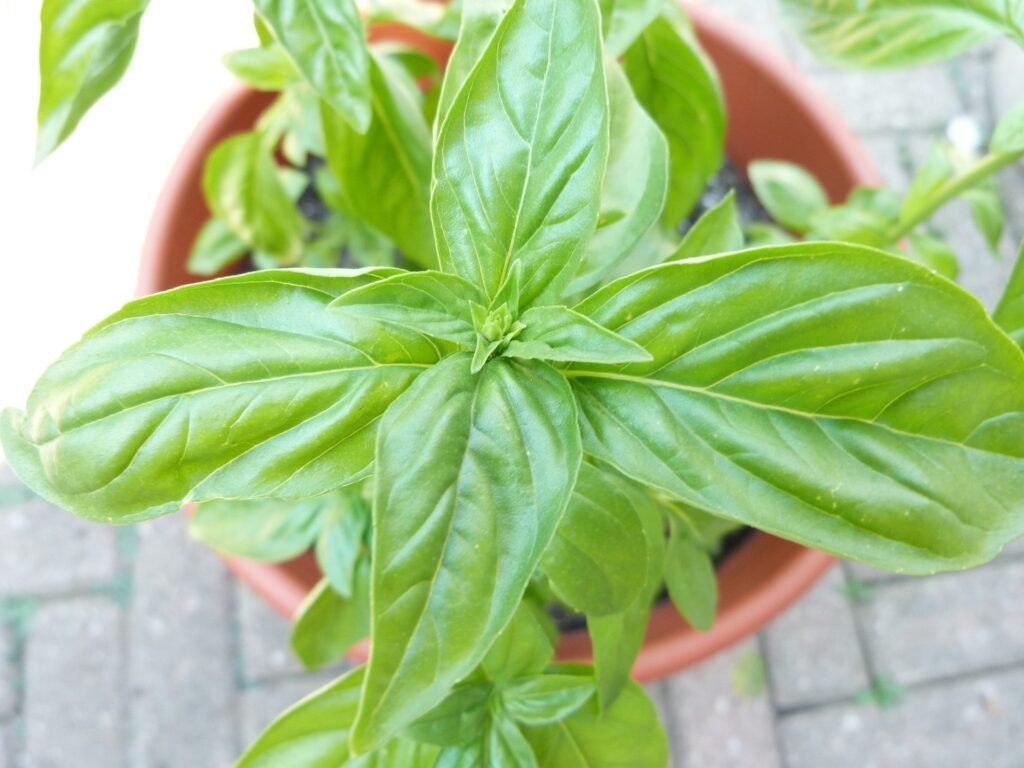Ocimum Basilicum: A Versatile and Aromatic Addition to Your Garden
Ocimum Basilicum, commonly known as Basil, is a popular choice for gardeners seeking a versatile and aromatic herb. Here’s a comprehensive guide on growing and caring for Basil.

Types of Ocimum Basilicum
Basil comes in various types, each with unique characteristics. Here are some common types:
| Type of Basil | Characteristics |
|---|---|
| Sweet Basil | Large, tender leaves, commonly used in Italian cuisine, ideal for pots and gardens. |
| Thai Basil | Smaller leaves with a spicy, anise-like flavor, perfect for Asian dishes, thrives in warm climates. |
| Lemon Basil | Citrusy aroma and flavor, great for salads and teas, prefers sunny spots. |
Growing Season
Basil has different growth patterns based on its type and environment. Here’s a general seasonal guide:
| Season | Activity |
|---|---|
| Spring | Plant new Basil, fertilize, start watering regularly. |
| Summer | Continue watering, provide full sun, pinch back flowers. |
| Fall | Harvest leaves, reduce watering, propagate cuttings. |
| Winter | Minimal maintenance, grow indoors if possible, water sparingly. |
Sunlight and Water Needs
Basil thrives in bright light and needs consistent moisture. They prefer:
Sunlight: Full sun; at least 6-8 hours of direct sunlight daily.
Watering: Keep soil consistently moist but not waterlogged. Water when the top inch of soil feels dry.
Soil Preferences
Basil prefers well-drained, fertile soil to promote healthy growth.
| Soil Type | pH Level | Characteristics |
|---|---|---|
| Loamy Soil | 6.0-7.5 | Rich in organic matter, good drainage. |
| Potting Mix | 6.0-7.5 | Suitable for herbs, contains perlite and compost. |
Fertilization and Nutrients
Basil benefits from regular feeding during the growing season.
| Season | Fertilization Type |
|---|---|
| Spring | Balanced liquid fertilizer (half-strength) every 4 weeks. |
| Summer | Fertilize monthly with balanced fertilizer. |
| Fall | Reduce fertilization, preparing for winter. |
| Winter | No fertilization needed. |
Pruning and Maintenance
Regular maintenance helps keep Basil healthy and attractive. Prune as needed to remove dead or damaged leaves and to maintain shape.
Additional Tips for Growing Basil
- Container Choice: Use pots with drainage holes to prevent waterlogging.
- Propagation: Basil can be propagated from stem cuttings.
- Pest Control: Watch out for common pests like aphids and whiteflies. Use insecticidal soap or neem oil as necessary.
- Harvesting: Regularly harvest leaves to encourage new growth and prevent flowering.
Conclusion
Ocimum Basilicum is a versatile and aromatic addition to any garden or kitchen, offering fresh leaves for culinary use with minimal care. By selecting the right type of Basil and providing proper sunlight, water, and soil conditions, you can enjoy this flavorful herb for years to come.